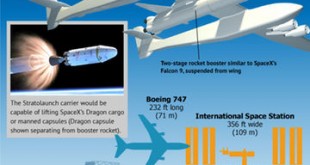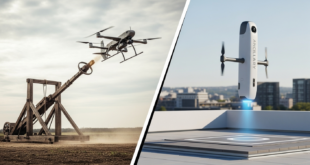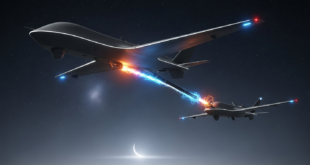In a move that reflects a growing shift toward affordability and endurance in defense technology, the U.S. Air Force has officially taken flight with ULTRA—short for Unmanned Long-Endurance Tactical Reconnaissance Aircraft.
This next-generation drone is designed to deliver powerful intelligence, surveillance, and reconnaissance (ISR) capabilities without the high operational costs traditionally associated with larger, more complex systems.
A New Chapter in Tactical ISR
ULTRA emerges from the Air Force’s broader strategy to develop cost-effective ISR platforms that can be deployed quickly, operate independently, and be manufactured at scale. Developed in collaboration with defense industry innovators, the ULTRA platform was crafted to serve the needs of tactical commanders who require persistent aerial overwatch across a variety of challenging environments.
Unlike expensive legacy systems, ULTRA is designed with affordability, modularity, and survivability in mind. Built using commercially available components and optimized for rapid fielding, the drone’s architecture enables easy repairs and upgrades—keeping costs down while performance remains cutting-edge.
Performance That Soars
ULTRA’s biggest draw is its long-endurance capability. Early test flights have demonstrated mission durations exceeding 80 hours, making it a strong candidate for continuous ISR coverage in both contested and permissive airspace. This is particularly valuable in scenarios where manned aircraft or large drones like the MQ-9 Reaper may be too vulnerable or cost-prohibitive.
The drone is powered by efficient hybrid propulsion, combining gasoline-powered engines with battery-backed electric systems, which contributes to both extended flight time and quiet operation—an advantage for covert reconnaissance missions.
With a wingspan of roughly 60 feet and a relatively lightweight airframe, ULTRA can fly at medium altitudes for days at a time while carrying a suite of high-resolution cameras, infrared sensors, and communications relays. The onboard payload is reconfigurable, allowing mission planners to adapt ULTRA for tasks ranging from border patrol and maritime surveillance to battlefield targeting and disaster response.
ULTRA boasts an impressive 80+ hours of endurance while carrying over 400 pounds of payload, making it a highly capable ISR platform. The drone is GPS-hardened, ensuring resilience in contested or electronically hostile environments.
Built using commercial-off-the-shelf (COTS) technology, ULTRA is based on the Stemme S12 manned glider, significantly reducing development and sustainment costs. Its modular payload bay can accommodate a variety of sensors, including electro-optical/infrared (EO/IR) systems, radio frequency (RF) sensors, and other intelligence-gathering packages.
Unlike high-altitude drones that require expensive optics and powerful sensors, ULTRA operates at lower altitudes, allowing for the use of smaller, cheaper sensors without sacrificing effectiveness. The drone is controlled via satellite-based command-and-control links, enabling global operations and real-time ISR data transmission to operators.
ULTRA vs. MQ-9 Reaper vs. RQ-4 Global Hawk: A New Class of ISR Drone
To truly appreciate the innovation that the ULTRA drone brings to the table, it’s important to compare it with two of the U.S. military’s most widely recognized and capable ISR platforms—the MQ-9 Reaper and the RQ-4 Global Hawk.
The MQ-9 Reaper is best known as a multi-role workhorse capable of both ISR (Intelligence, Surveillance, and Reconnaissance) and precision strike missions. With an endurance of around 27 hours and an operational ceiling of 50,000 feet, it can carry up to 3,800 pounds of payload, including a mix of sensors and guided munitions. However, this capability comes at a high cost—each Reaper unit costs approximately $32 million. Additionally, the MQ-9 is relatively complex to operate and maintain, making it a powerful but resource-intensive platform not ideally suited for attritable or prolonged low-risk surveillance missions.
Meanwhile, the RQ-4 Global Hawk serves as a strategic, high-altitude ISR platform used primarily for broad-area surveillance. It boasts impressive endurance—over 34 hours per mission—and flies at altitudes up to 60,000 feet, giving it unparalleled reach for regional intelligence gathering. The Global Hawk’s suite of sensors is powerful, but its payload capacity, at roughly 2,000 pounds, is focused entirely on ISR rather than combat. Its cost, however, is a significant limitation: each unit is valued at around $140 million, with operating costs that have raised concerns even within the Department of Defense. Its high visibility and lack of defensive systems also make it unsuitable for missions in contested airspace.
This is where ULTRA (Unmanned Long-endurance Tactical Reconnaissance Aircraft) finds its niche. Designed as a low-cost, long-endurance ISR solution, ULTRA is projected to fly for over 80 hours on a single mission—more than doubling the loiter time of both the MQ-9 and the RQ-4. Operating at medium altitudes—roughly between 15,000 to 25,000 feet—it isn’t built for stealth or combat but excels in persistent, wide-area surveillance. Its lightweight and modular design supports swappable ISR payloads, making it flexible for missions ranging from battlefield overwatch and border monitoring to disaster response and maritime patrol. Importantly, ULTRA’s projected unit cost is in the low single-digit millions, allowing it to be fielded in large numbers and even considered expendable if needed.
While the MQ-9 and RQ-4 dominate the high-end ISR domain, ULTRA represents a paradigm shift—a new class of ISR drone that offers strategic persistence without strategic cost. It is not here to replace those platforms but to complement them, expanding the operational options for U.S. forces in contested and austere environments where affordability, endurance, and operational flexibility are key.
Strategic Value in a Shifting Landscape
With the MQ-9 Reaper’s vulnerability in contested airspace and the RQ-4 Global Hawk’s exorbitant operating costs, the Air Force is actively seeking affordable, survivable ISR solutions. ULTRA’s glider-like efficiency and low procurement cost make it an ideal candidate for mass production, aligning with the Pentagon’s broader push for attritable and expendable drones.
The development of ULTRA aligns with the Pentagon’s increased focus on attritable and expendable systems—platforms that can be deployed in larger numbers and even sacrificed if necessary, without significantly impacting overall mission success or budget.
In contested airspace, where anti-aircraft systems threaten more expensive ISR platforms, ULTRA’s relatively low cost and long loiter time make it a strategic asset. Its endurance means fewer takeoffs and landings, less logistical support, and a reduced footprint—critical advantages in distributed operations or expeditionary deployments.
Moreover, the Air Force’s embrace of ULTRA underscores a broader shift toward modular autonomy. As advances in AI and edge computing progress, drones like ULTRA are expected to take on more decision-making tasks independently—reducing the burden on human operators and enabling faster response in dynamic operational environments.
The fact that ULTRA is already operating in AFCENT’s area of responsibility suggests it is being tested in real-world conditions. If successful, the drone could see wider deployment across multiple theaters, particularly in the Indo-Pacific, where long-range, persistent ISR is crucial for monitoring vast maritime and aerial domains.
The Air Force is expected to expand testing of ULTRA in various operational environments to evaluate its performance under different conditions. There is also potential for AI-driven autonomy enhancements, which could further reduce the workload on human operators.
If early deployments prove successful, the program could see increased procurement beyond the four drones planned for FY2025. Given its affordability and versatility, ULTRA may become a cornerstone of the Air Force’s future ISR fleet, especially as the military shifts toward distributed, low-cost unmanned systems in an era of Great Power Competition.
Looking Ahead: Swarming, Autonomy, and Integration
The ULTRA platform isn’t just a standalone tool—it’s part of a larger vision. Future iterations are expected to be integrated into multi-domain operational networks, where they will work in concert with satellites, crewed aircraft, and other drones in a coordinated ISR web.
With swarming capabilities on the horizon, ULTRA may eventually become the lead node in intelligent unmanned teams, conducting coordinated surveillance or electronic warfare missions with minimal human oversight. These capabilities will be critical as the Department of Defense moves toward its Joint All-Domain Command and Control (JADC2) initiative.
Conclusion: A Cost-Effective Eye in the Sky
ULTRA is a bold step toward reshaping how the U.S. Air Force gathers and uses real-time intelligence in an increasingly complex threat landscape. With its balance of endurance, adaptability, and cost-efficiency, ULTRA represents the future of ISR—one that trades size and price for smart design and operational persistence.
As global security dynamics evolve and the demand for real-time, persistent ISR grows, ULTRA’s successful test flights signal a new era for aerial surveillance—where smart, low-cost drones can outlast and outperform their predecessos across a wide range of missions.
 International Defense Security & Technology Your trusted Source for News, Research and Analysis
International Defense Security & Technology Your trusted Source for News, Research and Analysis


